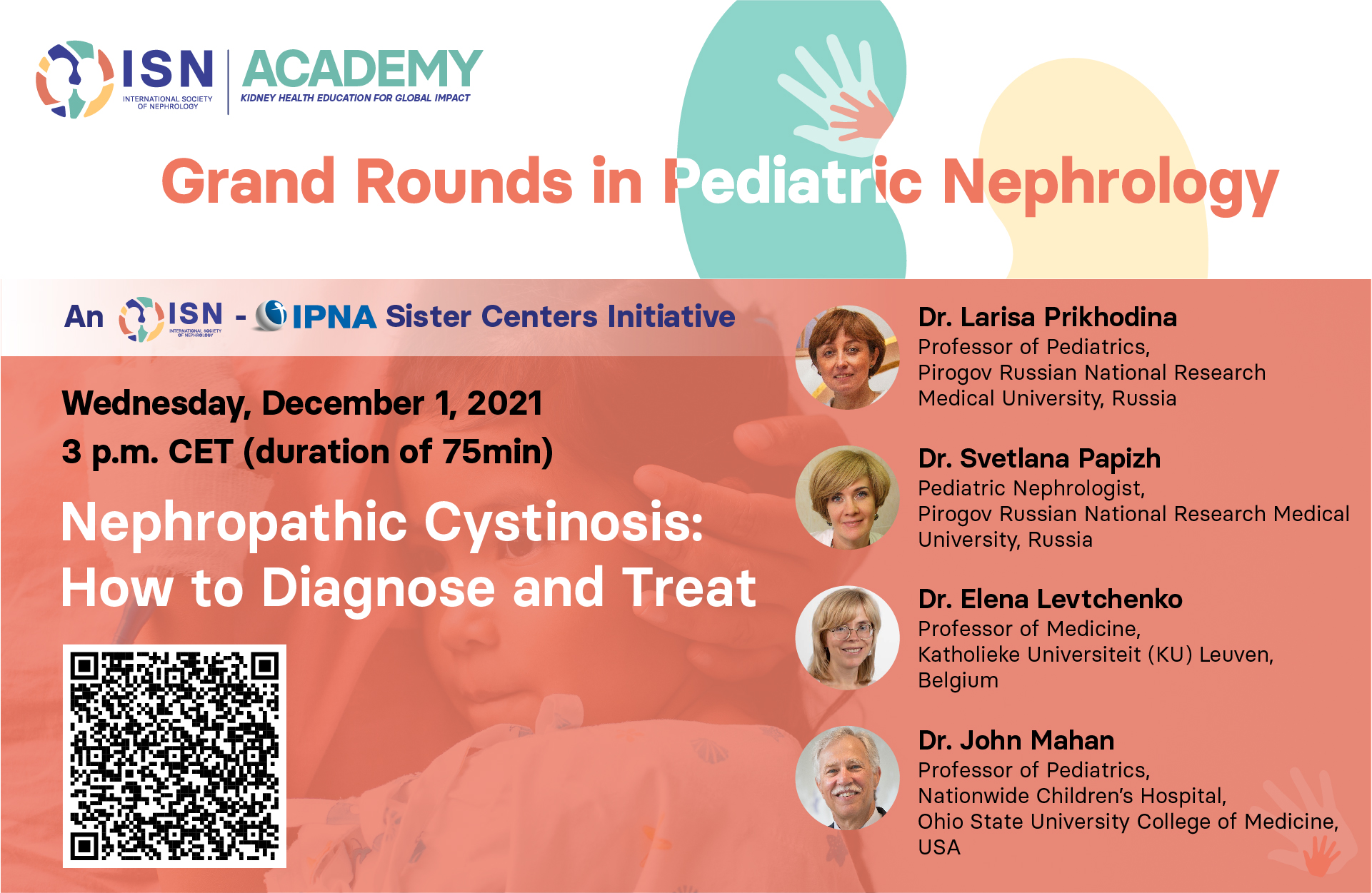REGISTRATION
Grand Rounds in Pediatric Nephrology — an ISN-IPNA Sister Centers initiative: Nephropathic cystinosis: how to diagnose and treat

Cystinosis is an autosomal recessive disease due to mutations in the lysosomal cystine transporter cystinosin encoded by the CTNS gene.
Clinical case: A boy of consanguineous parents presented with renal Fanconi syndrome (polydipsia/polyuria, metabolic acidosis, hypokalemia, hypophosphatemia, low molecular weight proteinuria, glycosuria). Nephropathic cystinosis was suspected. WBC cystine levels were measured and showed an elevated value (3.5 nmol half-cystine/mg protein, normal <1.0). Slit lamp examination demonstrated cystine crystals in the cornea.
To confirm the diagnosis, molecular analysis of the CTNS gene was performed. Initial results revealed no pathogenic variants in the coding part of the gene and no 57 kb deletion. As the next step, RT-PCR analysis of total RNA isolated from patient-derived fibroblasts in combination with cDNA sequencing were performed. Novel 9-kb homozygous deletion in the CTNS gene was identified. Treatment with cysteamine was initiated immediately upon the diagnosis.
Cystinosis is a treatable disease which should be diagnosed as early as possible. Treatment with cysteamine is lifesaving and should be administered immediately after diagnosis.
Learning Objectives:
- When to suspect and how to diagnose cystinosis?
- What are possible pitfalls in molecular diagnosis of cystinosis?
- How to treat cystinosis: current state of the art and future prospective?
Further reading and/or supporting material:
1. Francesco Emma et al. An international cohort study spanning five decades assessed outcomes of nephropathic cystinosis. Kidney International. 2021. https://doi.org/10.1016/j.kint.2021.06.019
2. Gema Ariceta et al. Effects of long-term cysteamine treatment in patients with cystinosis. Pediatric Nephrology. 2019. https://doi.org/10.1007/s00467-017-3856-4
3. Rezan Topaloglu. Nephropathic cystinosis: an update on genetic conditioning. Pediatric Nephrology. 2021. https://doi.org/ 10.1007/s00467-020-04638-9
4. Rocca CJ, Cherqui S. Potential use of stem cells as a therapy for cystinosis. Pediatric Nephrology. 2019. https://doi.org/10.1007/s00467-018-3974-7
5. Francesco Emma et al. Nephropathic cystinosis: an international consensus document. Nephrol Dial Transplant. 2014. https://doi.org/10.1093/ndt/gfu090
